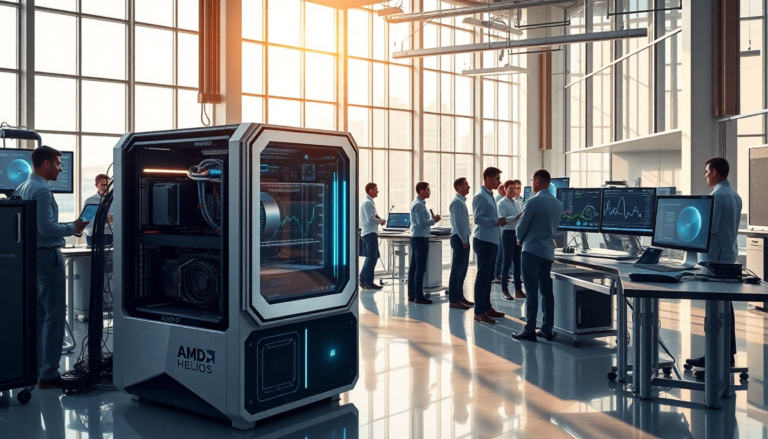Argomenti trattati
Enter the chaotic world of AI computing, where everyone is scrambling to keep up with the relentless pace of innovation. Here comes AMD, strutting in with its new Helios system, claiming it’s going to double the performance of its predecessors. But let’s not kid ourselves – in a landscape dominated by Nvidia, can AMD really make waves, or are we just witnessing another case of grandiose promises?
The rise of Helios
At a recent event, AMD showcased Helios, its first in-house designed rack-scale solution, built on next-gen EPYC ‘Venice’ processors and the Instinct MI400-series accelerator. The numbers sound impressive, right? Ten times the power of the MI300X! But you’ve got to wonder, how much of that power is just smoke and mirrors?
Sure, they’ve got the specs to make the techies drool. By 2025, the MI400X is projected to deliver a staggering 20 dense FP4 PFLOPS. But let’s be real: while AMD is throwing around numbers like confetti, Nvidia is out there with its Rubin R200, boasting 50 dense FP4 PFLOPS. So, is Helios really a game-changer or just AMD trying to save face in a losing battle?
Comparative chaos
Now, let’s dive into the nitty-gritty of this tech showdown. AMD’s Helios will be using the latest Zen 6-powered EPYC CPUs and CDNA ‘Next’-based GPUs, which means it will be tapping into some serious horsepower. But what happens when you compare it against Nvidia’s offerings? You’re looking at a potential performance gap that could make a grown man weep. And while AMD boasts about increasing memory capacity by 50% and bandwidth by over 100%, will it actually translate to real-world applications?
It’s like a high-stakes poker game, and AMD is betting big. But what if the cards don’t fall their way? The MI400X might surpass the Blackwell Ultra, but against the powerhouse that is Nvidia’s NVL576, it’s like bringing a knife to a gunfight. How bold, or perhaps foolish, can you afford to be in a world that demands constant superiority?
The implications of innovation
Every move AMD makes seems to be a desperate attempt to claw back some market share from Nvidia. The Helios system is designed to adhere to OCP standards, promising next-gen interconnects that could potentially transform how AI workloads are handled. But will the industry buy into AMD’s vision, or is it just another shiny object to distract from the harsh realities of competition?
If there’s one thing we can count on, it’s that AMD will continue to push the envelope, even if it means stepping on a few toes. But as they roll out these ambitious plans, one can’t help but wonder: will they be the triumphant underdog or just the latest casualty in the war of tech giants?
So, as we look to the future, it’s clear that while AMD is making strides with Helios, the real question remains: is it enough? Or are we just gearing up for another round of disappointments wrapped in flashy announcements? Only time will tell.

